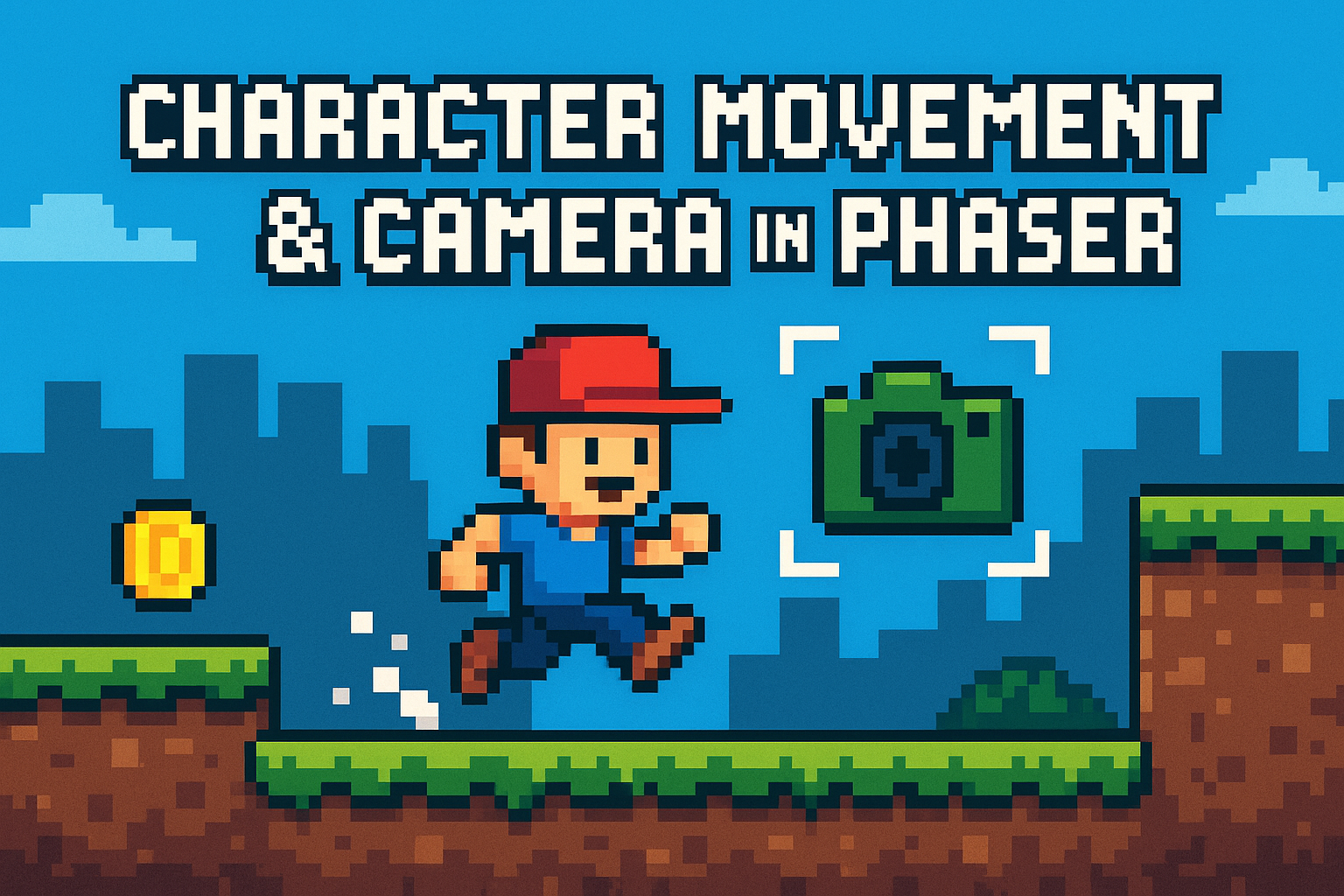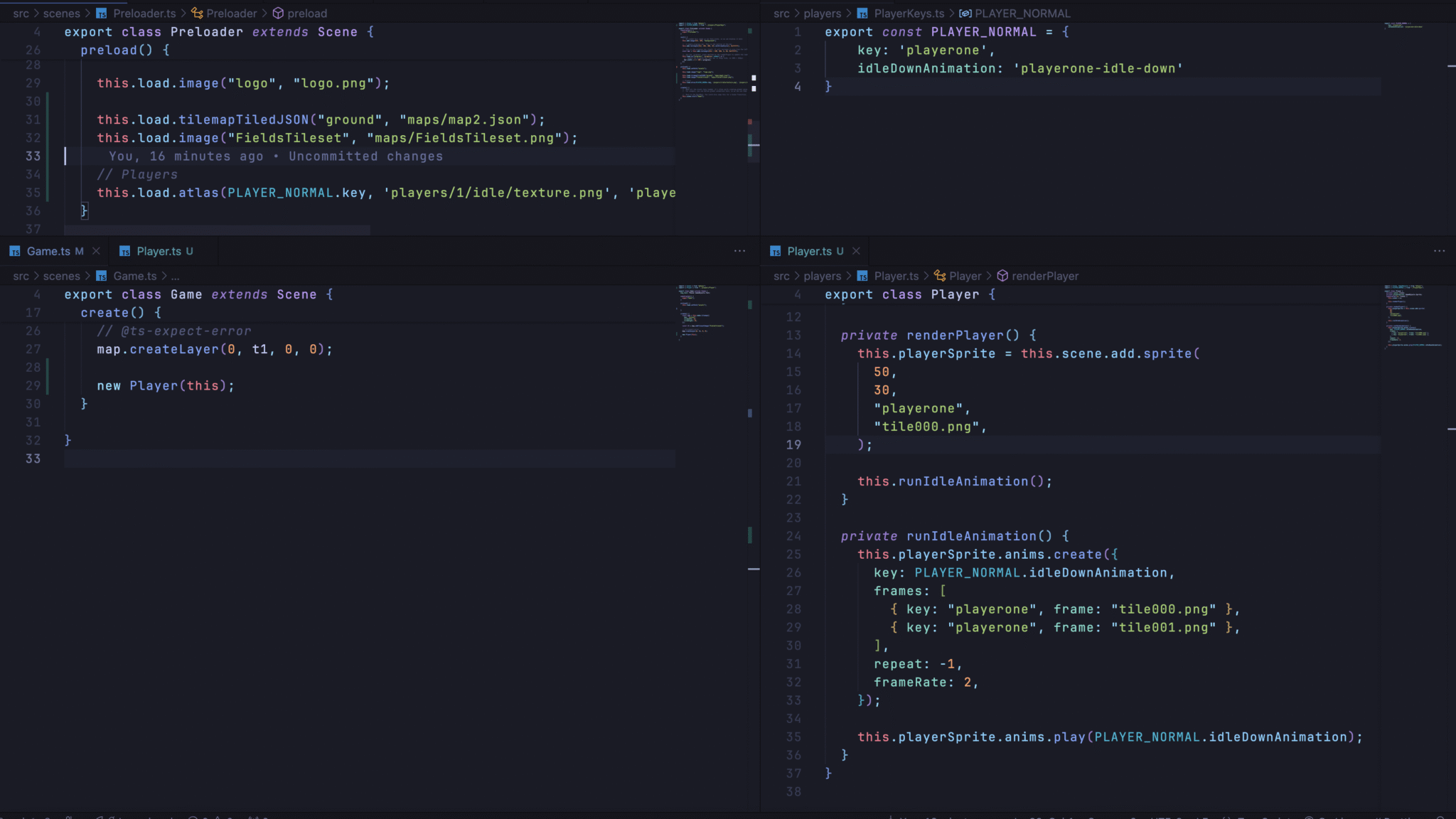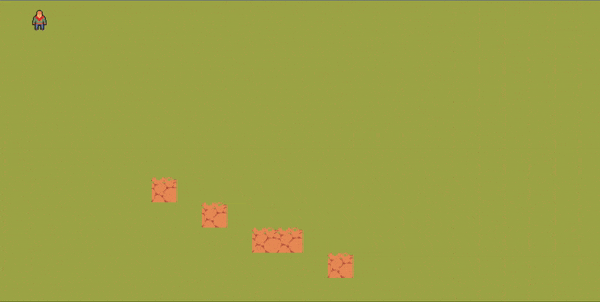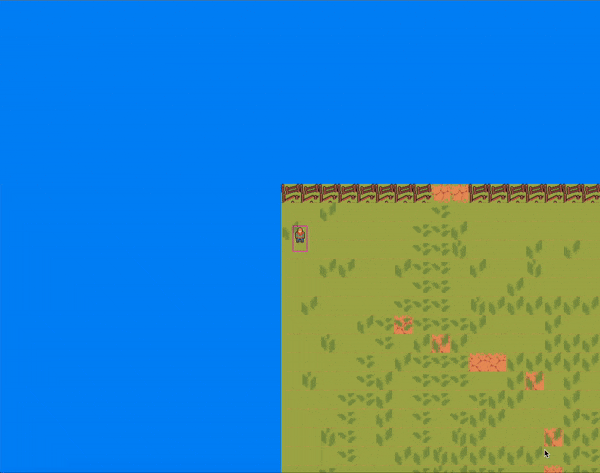Phaser – Character, movement, camera?
November 25, 2024

I'm using characters from CraftPixFreePixelCitizen. I don’t need anything fancy—just basic animations like idle and walking. This collection offers 4 different characters and pairs nicely with the other asset packs.
Displaying a Character
Through some trial and error, I identified two key steps:
- Break the PNG into individual sprites.
- Upload them into a texture packer.
I used Sprite-Cutter with the "By number of columns/rows" cutting method. After that, I used FreeTexPacker, uploading the 4 idle character sprites. It generated the required PNG and JSON files.

Preloading Textures
this.load.atlas(PLAYER_NORMAL.key, 'players/1/idle/texture.png', 'players/1/idle/texture.json');
Rendering the Character To render the character, set the initial x/y positions, the key of the loaded texture, and the frame name from the JSON file.

In the end, this gives us a simple character just standing and idling at a fixed position.

Movement Adding movement was easier than expected. The update() function in the main scene calls the Player.move() method each frame.
Speed is set to 200 for testing. I check which key is pressed, update the velocity, and run the appropriate animation.
Here's the basic movement logic:
public move(): void { if (!this.cursors || !this.playerSprite) return; const speed = 200; if (this.cursors.down.isDown) { this.playerSprite.anims.play(PLAYER_NORMAL.downAnimation, true); this.playerSprite.setVelocityY(2 * speed); } else if (this.cursors.up.isDown) { this.playerSprite.anims.play(PLAYER_NORMAL.upAnimation, true); this.playerSprite.setVelocityY(-2 * speed); } else if (this.cursors.left.isDown) { this.playerSprite.anims.play(PLAYER_NORMAL.upAnimation, true); this.playerSprite.setVelocityX(-2 * speed); } else if (this.cursors.right.isDown) { this.playerSprite.anims.play(PLAYER_NORMAL.upAnimation, true); this.playerSprite.setVelocityX(2 * speed); } else { this.playerSprite.setVelocityY(0); this.playerSprite.setVelocityX(0); this.playerSprite.anims.play(PLAYER_NORMAL.idleDownAnimation, true); } }
Note: I didn’t include specific left/right movement sprites yet, but the code is ready when the graphics are updated.
Camera To make the camera follow the player:
this.scene.cameras.main.startFollow(this.playerSprite, true);
Collision I added a fence layer (used for collisions) and a grass layer (for visual effects) using Tiled.
Steps: In Tiled, modify the fence tileset and add a custom boolean property:
collides: true
Update Preloader.ts:
this.load.tilemapTiledJSON('ground', 'maps/map2.json'); this.load.image('FieldsTileset', 'maps/FieldsTileset.png'); this.load.image('fence', 'maps/fence.png'); this.load.image('grass', 'maps/grass.png');
In Game.ts, add the tileset images and layers:
const t2 = map.addTilesetImage('fence'); const t3 = map.addTilesetImage('grass'); const fenceLayer = map .createLayer('fence', t2, 0, 0) .setCollisionByProperty({ collides: true }, true); map.createLayer('grass', t3, 0, 0);
Add physics collider:
this.physics.add.collider(this.player.getSprite(), fenceLayer);
If you encounter a physics is undefined error, update your Phaser config (likely in main.ts):
physics: { default: 'arcade', arcade: { debug: true } }

Final Thoughts
So far, things are shaping up well. The foundation is in place, and I’ve worked through key challenges.